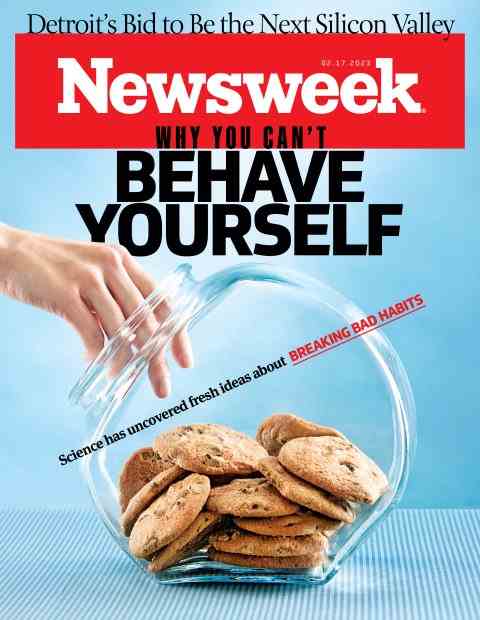Most people associate bad habits with the kind of activities that wind up on a list of New Year’s resolutions—eating and drinking too much, spending too much time on the smartphone and avoiding the gym.
But bad habits are often behind more than just personal peccadilloes. The neural machinery of habit formation is also the root cause of many of the worst collective behaviors: Texting while driving, gossiping about co-workers, littering, mansplaining, farting silently in public, making racist or unfair assumptions about strangers and even spreading the kind of misinformation online that some experts warn is threatening to undermine our democracy.
Many people who are aware of bad habits and recognize them to be potentially harmful blame themselves for being weak and lacking the willpower needed to resist them. But in recent years, scientists have used advanced imaging technologies to peer inside the brain as habits are being formed and they’ve mapped habit-formation to precise structures in the brain—structures formed so long ago in the smithy of evolution that humans share them with other mammals.
Research suggests that habits, which operate below conscious awareness, usually cannot be tamed simply by resolving to resist them. By the time you realize you’re munching on that bag of potato chips, picking your nose, fighting with someone on Facebook or veering into oncoming traffic while texting, it’s too late.
If we want to change our habits, research suggests, we need to understand how they work, anticipate the cues that trigger them and find ways to break our habit cycle before it starts. Taming a bad habit requires a lot of planning: we need to reverse engineer the chain of behavior that precedes them, and then either remove the cues that set us off altogether, or take the time to build new habits that will replace them. It involves acknowledging that much of what we do is habitual and not the result of our own decision-making, and setting goals in a way that drives new behavior patterns.
Still, it’s not easy to break a habit—nature has made sure of it. That’s because habits are an essential tool of survival—without them, the simple tasks of everyday life would overwhelm us. Americans spend an average of 43 percent of each day engaged in tasks that are largely unconscious—that have become so automatic that we’re able to think and talk about other things while we’re doing them, according to research by Wendy Wood, a psychology professor at the University of Southern California.
“Habits are a unique kind of a learning system—they’re unconscious—so we don’t have access to them in the way that we have access to other decisions,” Wood says. “And I think that’s been overlooked in the popular press and that gets people into trouble.”

Courtesy of National Academies
Understanding habits and learning how to gain some control over them creates possibilities for making the world a better place. We could all be healthier, happier and less distracted. To hear Wood tell it, it might even improve the state of our democracy.
Habit Hackers
One demonstration of how the neural machinery of habit formation can work against us, and how difficult it is to control, is the phenomenon of New Year’s resolutions. Last year, an estimated 40 percent of Americans resolved to change bad habits starting on January 1. By the end of the month, roughly one-third had already given up, and fourth fifths will eventually fail, says Katy Milkman, a professor at the Wharton School and author of the book How to Change: The Science of Getting From Where You Are to Where You Want to Be.
What’s more, technology has become a potent tool of exploitation in our consumer culture. Social media companies, Wood argues, have been so successful at hacking the primitive, unconscious parts of our brains involved in habit formation that much of the world’s population is now habituated to checking in with Facebook, Tiktok, Instagram and their smartphones—multiple times a day.
“Social media sites are set up to form habits and they do it so effectively that people are responding to cues on social media often without thinking,” says Wood, author of the book Good Habits, Bad Habits: The Science of Making Positive Changes That Stick. “They aren’t thinking about the consequences of what they’re doing. They’re not thinking at all.”
One of those consequences is the rapid spread of falsehoods through social media networks. Misinformation has been attributed to growing partisan bias, tribalism, polarization and other factors. But the true mechanism, says Wood, may in fact be habit: the mindless sharing of sensationalistic fake news automatically, often without considering the impact of what we are doing.
That’s the premise of Wood’s new research. She and her colleagues found that habits are highly predictive of whether a user of social media will post misinformation—more so than whether or not the poster agrees with it or even believes it to be true. They published the work in January in the Proceedings of the National Academy of Sciences (PNAS).
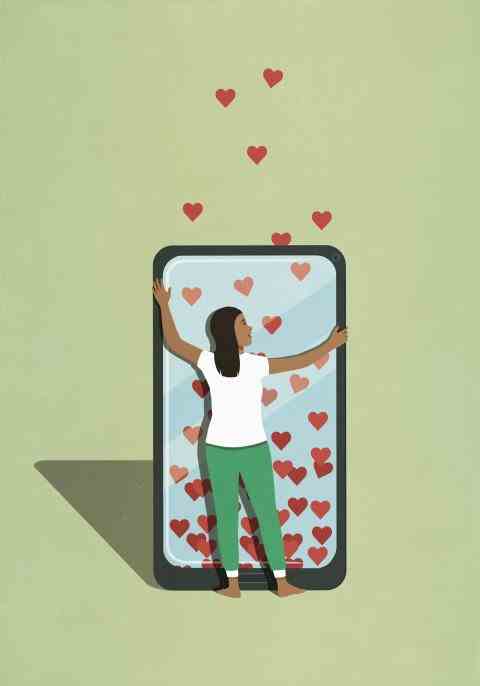
In four studies, Wood and her colleagues presented a series of 16 news headlines, some of which were false, to thousands of volunteers, and offered them the opportunity to share the headlines on social media. The authors then assessed partisanship, critical thinking and the strength of social media sharing habits by analyzing past sharing on Facebook, and whether their sharing behavior seemed consistent with “automaticity.” On Facebook the act of sharing information is reinforced and becomes habitual because users get recognition from others for doing so. Once this “reward-based learning system” has formed a habit, the authors concluded, “information sharing is “automatically activated by cues on the platform, without users considering critical response outcomes.”
Misinformation is one symptom of a far larger problem. Intentionally or not, smartphones seem to be optimized for habit formation, offering a cue in the form of a notification, followed by a reward, in the form of an email or message offering social contact, for giving it attention. And many of us are now controlled by them. Many people automatically reach for our phones the minute they wake up, or shortly thereafter, and check them for email or news.
It’s common these days to attribute these behaviors to “addiction,” but this is inaccurate, says Wood. “The habit system is so much broader than that,” she says. “It doesn’t require craving. Habits are a very common learning system. They’re not addictions. We couldn’t get through our day without habits.”
Survival Tool
In his classic 1890-tome, the Principles of Psychology, William James introduced an idea that remains central, more than 130 years later, to the study of habits: that once a habit is formed, a single cue—”an idea or perception”—can serve as an unconscious command that kicks off an automated “chain” of associated movements, which take place outside our awareness. The brain groups multiple complex actions together into a single “habit” that can be performed automatically, James observed. For example, many people have had the experience of driving home from work and pulling into the driveway without consciously paying attention. Later, they don’t remember driving home at all because their thoughts were elsewhere. (Psychologists now call this process of storing multiple actions, ideas or thoughts into a single mental file folder in memory “chunking.”)
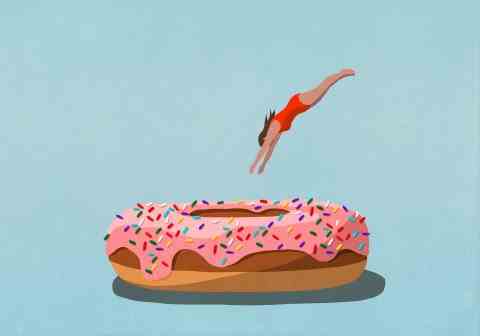
Not only can the brain perform complex tasks without our conscious awareness, it can also learn unconsciously to remember new information—such as how to walk home from the store or what cues are associated with a given weather pattern.
Advances in neuroimaging and other neuroscience techniques have in recent years allowed scientists to watch the way this unique form of human learning operates in the brain in real time, with increasing resolution. They’ve also mapped these processes with increasing precision to specific parts of these structures. “Explicit” memories—those that we consciously make—are stored in a seahorse-shaped part of the brain known as the hippocampus. But humans are also capable of “implicit learning” or “implicit memory.” The brain structures responsible for storing these types of memories and associations reside deep in the primitive center of the brain, adjacent to the hippocampus, known as the basal ganglia.
The basal ganglia is the part of the brain that allows us to chew food, brush our teeth without thinking or ride a bicycle. It’s also the instinctual, “quick thinking” part of the brain that allows us to make snap judgements in response to sensory perceptions that signal danger. It is what makes the hair stand up on the back of the neck of a seasoned soldier who unconsciously associates the sudden quiet in a Vietnamese jungle with enemy soldiers about to spring an ambush—and it enables the soldier to dive for cover without being consciously aware of the impending ambush. It is a survival tool that evolution has given not only to humans but to other animals as well.
The basal ganglia is also where established habits reside. Neuroscientists have observed it activating when animals and human subjects engage in habitual behaviors.
Although fully formed habits are unconscious, conscious thought is initially involved when we form new ones. Most people, for instance, don’t think about how to ride a bicycle, but they remember where they were when they first learned. The reason many of us associate habitual actions with conscious thought is because often we remember making the choice, at some point in the past, to perform them.
Indeed, brain imaging studies in recent years have consistently shown that the conscious executive control systems of the brain located in the prefrontal cortex are often active in the first stage of habit formation when we perform a novel task. When we focus the spotlight of our conscious attention on learning to ride a bike, typing in a new locker combination at the gym or smoking that first cigarette, the areas of the brain involved in conscious thought, intentionality and complex reasoning are active, says Elliot Berkman, a psychology professor at the University of Oregon, who co-directs the Center for Translational Neuroscience.
For a habit to take root, not only are we consciously aware of our actions, but those actions also usually bring a reward. You see a bag of potato chips (the cue), start shoveling chips into your mouth (the action) and experience a flavor explosion (the reward). Or a headline pops up on your news feed (the cue), you repost a news story on Facebook (the action) and receive a flood of positive comments, likes and reshares from long lost friends (the reward).

Courtesy of Elliot Berkman
In this first stage of habit formation—and in the second stage, when we repeat the action (what Berkman calls “consistent reinforcement”)—the experience of reward causes our brain to release the neurotransmitter dopamine in the basal ganglia. The dopamine kicks off a chemical cascade in the brain that causes the basal ganglia to forge new connections between neurons that, over time, form into the brain circuits required to automate a habit.
Once a habit is fully formed, the services of the conscious executive control areas of the brain are no longer needed. We are free to direct our limited attention to new things (like the plot of the television show we are watching as we eat those potato chips).
At this point, the neurological structures involved in the habit shift to what’s called the sensorimotor loop, which includes a different part of the basal ganglia and the areas of the cortex involved in motor control, says Berkman. Anytime the neurons associated with a cue are activated (by, for instance, the sight of that bag of potato chips or the appearance of a bold-faced news story in our Facebook feed), they trigger the firing of the neurons involved in the chain of actions that brings about the desired reward.
“The basal ganglia are well positioned to form habits because they are connected to the reward regions but are also intimately connected with areas of the brain involved in motor control,” explains Berkman. “If you wanted to have a brain circuit that basically said, ‘oh, this behavior just earned me a reward,’ it’s ideally located. And that’s essentially what the basal ganglia do.”
Neuroscientists are still characterizing the exact locations of these phenomena—zooming in with increasing precision and resolution on how brain activity in the basal ganglia changes as habits take root. In a paper published in March, behavioral neuroscientist Ingo Willuhn and his team at the Netherlands Institute for Neuroscience precisely tracked the location and release of dopamine in the basal ganglia during different stages of habit formation in the brains of rats. It may one day be possible to develop new drugs to help in breaking pathological habit loops associated with addiction and obsessive compulsive disorder, Willuhn told Newsweek.
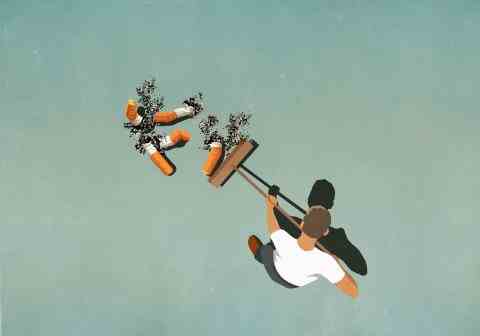
In his lab, Berkman has been studying the way personal values and abstract thought might be used to help change habits such as smoking or bad eating, by developing techniques that keep personal values and large, concrete goals at the front of mind, so they remain as “salient” and powerful as the unconscious cues that activate bad habits. For instance, if you have a goal like climbing Mount Everest, and the goal feels tangible and salient, he says, you have a better chance of noticing when you’re triggered to, say, light up that cigarette. The goal, in other words, helps break the habit cycle.
For run of the mill habits, we don’t have to wait for a pill or even Berkman’s new techniques. Wood, Berkman, Milkman and a whole host of others who study the phenomena have plenty of advice that already has been proven to work.
How to Break a Habit
To change a habit, the first thing we need to do, Wood argues, is rethink our assumptions. In her lab Wood has found that people not only tend to overestimate their ability to make decisions, but often they are also resistant to the idea they are operating out of habit. In one study, she found that habitual coffee drinkers consistently recognized that their coffee drinking was a product of both habit and fatigue. But they consistently overestimated the role of fatigue and conscious decision-making in their choices. When Wood and her team followed the coffee drinkers around and monitored what caused them to drink the beverage, they found that habit played a far greater role then the subjects reported.
“People tend to interpret their habits as decisions that they’ve made—even when we can demonstrate that they’re acting automatically on habit,” Wood says. “We’ve found that people are a little resistant to that message. We all want to believe we’re in control of our behavior. Because most of our habits work for us, we tend to believe our habits are what we would’ve done if we were making decisions. But with habits, they’re not.”
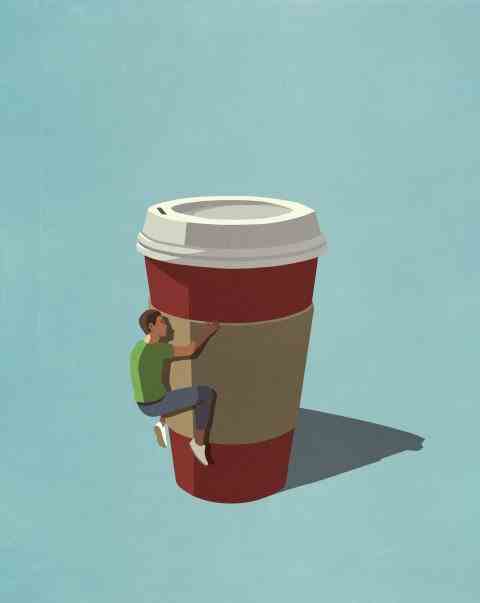
That’s why we often tell ourselves that if we could only rely on “willpower,” maybe we could resist reaching for a cigarette or a cookie or read a book rather than watch television. We mistakenly believe habits are actions we can consciously watch unfold in real time and actively decide to resist.
In fact, says Wood, often by the time we realize we are smoking that cigarette, eating that cookies or watching TV, it’s usually too late—we have already unconsciously fallen into a well-established habit loop and acted.
The most direct and effective way to change a habit, Wood argues, is not to change or police your conscious thoughts, but to change your environment, and attack the cues that set off the habit in the first place. If you don’t have a cue, you won’t set off an unconscious habit sequence.
To take one common example: Many of us, by now, have developed the habit of mindlessly picking up our mobile phones and checking our email. The cue is often an obvious one: we see our phone, or we hear a ping. We reach for it without thinking. The next thing we know, we are doom scrolling.
Next time you are on vacation, Wood recommends placing the phone where you don’t see it. You’d be surprised at how easy it will be to avoid checking your phone without those simple cues. If you’re dubious, it might be because many popular habit books, Wood notes, conflate habits with addictions—erroneously suggesting the absence of the phone will elicit a craving. But that is usually not the case. We don’t “need” to check the phone—or even necessarily want to, particularly when we are on vacation, Wood notes. We have simply trained ourselves to do so when presented with the cue.
This simple idea—that we can break habits by controlling cues—has wide public policy implications. Wood and her collaborators suggest it could help solve the problem of the habitual sharing of misinformation on social media platforms.
In her PNAS paper, Wood and her collaborators looked at thousands of active Facebook users. They gave study participants a questionnaire that assessed frequency of sharing and the amount of thought put into it. Those with weak habits—who put the most thought into sharing—were almost four times more discerning about what they shared than those acting more habitually. The strongly habitual sharers (those in the top 15 percent of active posters in the study) were responsible for 37 percent of the false headlines shared in the study. When presented with false headlines, those with a strong habit for sharing posted 26 percent of them, while those with weak habits only shared about 3 percent. Notably, those with strong habits shared news that challenged their political beliefs as much as they shared news that backed them up.
To change this behavior on a mass scale, Wood and her colleagues argue the social media companies will need to tweak the visual cues associated with news items to reduce automatic sharing. At present, the standard manner of presentation—a photo source and headline, with the sharing response arrow underneath—is designed to promote sharing.

Another recommended change is in the way Facebook rewards sharing. Currently, the algorithms that determine where content is displaying in user feeds often place the most “liked” content at the top. Instead, Wood suggests that unverified news content should be deprioritized, until it can be approved by moderators. In addition, content that seems to be generating disproportionately high rates of engagement from strongly habitual users—those most likely to share an article, say, without reading it—should receive extra verification. (Facebook has said that it already prioritizes original reporting from high-quality news sources in its feeds.) Providing some kind of reward or incentive for users to share accurate information might slowly change these habits.
Another option would be to disrupt habitual news sharing by adding new buttons to go alongside the “share” and “like” buttons, such as “fact-check” or “skip”—this disruption or changing up of the cues would cause some habitual users to stop and think before they share.
“You can change cues which disrupt habits,” Wood says. “You can also put people through a different learning experience, so they develop different habits oriented more toward sharing accurate information.”
The same principles apply to changing the kind of behaviors we often attempt to change with New Year’s resolutions. If you want to start a new habit, such as going to the gym after work, Wood suggests, it’s important to be on the lookout for old cues that might derail your plans. Wood notes that a common problem for those who begin the new year resolving to work out is that many people decide to exercise after work. Then when they get home from work, they find themselves lying in front of the television, eating potato chips. Most people will interpret this as a lack of willpower. They will tell themselves, “I’m really tired,” or “I’m not really motivated,” or “maybe I’m not the kind of person who exercises,” Wood says. Often, however, the true reason they never made it to the gym is that when they returned home, they spotted a familiar cue—the couch, the kitchen, the bag of potato chips on the counter—and unconsciously responded by taking a habitual set of actions without thinking.
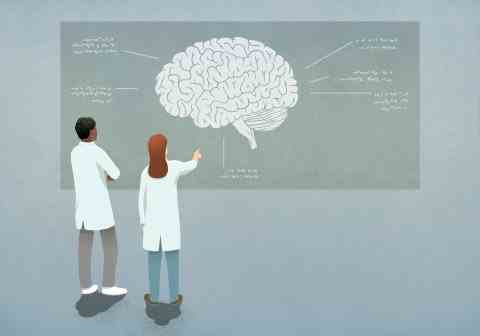
The solution? Avoid going home first and exposing yourself to the visual cues that will prompt you to mindlessly head to the kitchen, grab a bag of potato chips and plunk down on the couch. Leave directly from the office. Or add cues aimed at promoting the new behavior. If you want to begin exercising, Berkman says, the first step is to create an environment that will facilitate it—not just by avoiding negative cues, but by adding positive ones.
Berkman suggests clearing out time in the schedule, making physical changes to the environment, such as placing running shoes in the right place so they are visual and “salient.” Then it’s important to make sure the action is pleasurable and comes with a reward that will reinforce the new habit. Setting modest, realistic goals can also be helpful, because you are more likely to succeed, and experience the feeling of reward that comes with it. That feeling reinforces the new habit, makes you more likely to repeat it in the future, and can speed up the time it takes for the habit to take root.
One of Milkman’s favorite techniques in the initial phase is what she calls “temptation bundling.” Sometimes it’s easier to overcome initial reluctance to exercise by combining a desirable action with a neutral habit—such as watching a movie one wouldn’t otherwise have time to watch while riding a stationary bike or listening to an audio novel while jogging—until the exercising becomes habitual.

Peter Murphy
Berkman notes that many of these same principles apply when changing a “bad habit.” It’s far easier, he notes, to replace an old habit with a new one than to simply attempt to extinguish an old one. He cites a famous quote by Fyodor Dostoevsky, who wrote: “Try to pose for yourself this task: Not to think of a polar bear, and you will see the cursed thing will come to mind every minute.” (The quote inspired a famous social psychology experiment that demonstrated those asked not to think about a white bear thought about a white bear far more than they otherwise would have).
“If you say, ‘well, don’t smoke,’ even if I wasn’t craving a cigarette, now I’m thinking about cigarettes,” Berkman says. “It’s easier to chew gum.”
This approach requires using the conscious mind to train new habits—identifying a cue, following that with a desired action and then reinforcing the habit loop with a reward.
“Our minds don’t have a capacity for negation,” he says. “You can’t delete the thing from memory like a computer. If you try, that’s all you’re going to think about. So you need to change the way you respond to the thought or cue.”
“In order to change habits,” he says, “you actually need to kick into a different gear at least for a little while.” That’s something to think about.
